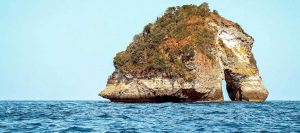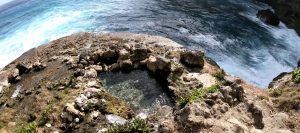Bali is a province in Indonesia. The provincial capital is Denpasar. Bali History is also one of the islands in the Nusa Tenggara Islands. At the beginning of Indonesia’s independence, the island was included in the Lesser Sunda Province with thousands of cities in Singaraja, and is now divided into 3 provinces: Bali, West Nusa Tenggara and East Nusa Tenggara.
In addition to comprising the island of Bali, the province of Bali also consists of smaller islands around it, namely Nusa Penida Island, Nusa Lembongan Island, Nusa Ceningan Island, Serangan Island, and Menjangan Island.
Bali History Geographically, Bali is located between Java and Lombok Island. The majority of Balinese are Hindus. In the world, Bali is well-known as a tourism destination with the unique results of its arts, especially for Japanese and Australian tourists.
Bali History is also known as the Island of the Gods and the Island of Thousand Temples. The island of Bali is part of the Lesser Sunda Islands along 153 km and is 112 km wide, about 3.2 km from Java Island.
Geographically, Bali is located at 8 ° 25′23 Selatan South Latitude and 115 ° 14′55 ″ East Longitude which makes it tropical like other parts of Indonesia. Mount Agung is the highest point in Bali as high as 3,148 m. This volcano last erupted in March 1963. Mount Batur is also one of the mountains in Bali. About 30,000 years ago, Mount Batur erupted and produced a terrible disaster on earth.
In contrast to the north, the southern part of Bali is a lowland which is flowed by rivers. Based on relief and topography, in the middle of the island of Bali lies a mountain range that extends from west to east and between the mountains there are volcanic clusters namely Mount Batur and Mount Agung and mountains that are not flaming, namely Mount Merbuk, Mount Patas and Mount Seraya.
The existence of these mountains causes the Geographical Region of Bali to be divided into 2 (two) parts that are not the same, namely North Bali with a narrow lowland and less sloping and South Bali with a broad low and sloping land.
The slope of the island of Bali consists of flat land (0-2%) covering an area of 122,652 ha, undulating land (2-15%) covering an area of 118,339 ha, steep land (15-40%) covering an area of 190,486 ha and very steep land (> 40%) covering an area of 132,189 ha. Bali Province has 4 (four) lakes located in mountainous areas, namely Lake Beratan or Bedugul, Buyan, Tamblingan, and Batur.
Beautiful Balinese nature makes Bali island famous as a tourist area. The capital city of Bali is Denpasar. Other important places are Ubud as an art and resting center, located in Gianyar Regency. Nusa Lembongan is one of the diving sites, located in Klungkung Regency.
Whereas Kuta, Seminyak, Jimbaran and Nusa Dua are some of the main destinations for tourism, both beach and resort, spa, etc., located in Badung Regency.
The total area of Bali Province is 5,636.66 km2 or 0.29% of the territory of the Unitary Republic of Indonesia. Administratively, the Province of Bali is divided into 8 districts, 1 municipality, 55 sub-districts, and 701 villages / kelurahan.
Bali History when the Balinese fought against the invaders to defend Bali
Balinese people fight against the invaders
Japan occupied Bali during World War II and at that time a military officer named I Gusti Ngurah Rai formed a Balinese army ‘freedom fighter’. Following the surrender of Japan in the Pacific in August 1945, the Dutch immediately returned to Indonesia (including Bali) to re-establish their colonial rule like before the war.
This was opposed by the Balinese resistance forces which at that time used Japanese weapons. On November 20, 1945, the battle of Puputan Margarana broke out in the village of Marga, Tabanan Regency, central Bali. 29-year-old Colonel I Gusti Ngurah Rai led his army from the eastern region of Bali to carry out attacks to the death of heavily armed Dutch troops.
All members of the Bali battalion were killed and made it the last Balinese military resistance. In 1946 the Dutch made Bali as one of 13 regions part of the State of East Indonesia which had just been proclaimed, namely as one of the rival countries of the Republic of Indonesia which was proclaimed and headed by Sukarno and Hatta.
Balinese people against the invaders who attacked
Balinese people against the invaders who attacked
Bali was later included in the Republic of Indonesia United when the Dutch recognized Indonesia’s independence on December 29, 1949. In 1950, Bali officially left its union with the Netherlands and legally became a province of the Republic of Indonesia.
The natural disaster of Mount Agung erupts violently
Bali History has the eruption of Mount Agung that occurred in 1963 has shaken the community’s economy and caused many Balinese people to migrate to various other areas in Indonesia.
eruption of Mount Agung 1963
The eruption of Mount Agung 1963
Bali History G30S PKI
Bali History in 1965, along with the failure of the G30S coup against the national government in Jakarta, in Bali and many other regions there was a crackdown on members and sympathizers of the Indonesian Communist Party. In Bali, it is estimated that more than 100,000 people were killed or missing. Nonetheless, the events of the early days of the New Order up to now have not been successfully revealed legally. The Bali History is always remembered by the Balinese who saw this incident and cannot be forgotten, because the Bali History is the most feared by the Balinese and all Indonesians.
Terrorist Attack in Bali Part of History Bali
The Bali History that hurts the feelings of all Balinese people is the terrorist attack took place on October 12, 2002, in the form of a 2002 Bali Bomb attack on the Kuta Beach tourism area, leaving 202 people dead and 209 others injured. The 2005 Bali Bomb attack also occurred three years later in Kuta and Jimbaran beach. These events received wide international coverage because most of the victims were foreign tourists and caused the Bali tourism industry to face severe challenges in recent years, this is the most cruel Bali History at that time.
Bali bombing terrorist attack
Bali bombing terrorist attack (2002)
Bali History Demography of the Island of Bali
Balinese Hindu pray at the temple
Balinese Hindu pray at the temple
The population of Bali is more than 4 million people, with the majority of 83.5% practicing Hinduism. Other religions are Buddhism (0.54%), Islam (13.37%), Protestant Christianity (1.66%), Catholicism (0.88%), Confucianism (0.01%), and Beliefs (0, 01%). Islam is the largest religious minority in Bali with followers now reaching 13.37% based on the last census in January 2014. Apart from the tourism sector, Balinese people also live from agriculture and fisheries, the most famous of which is the subak system of agriculture in Bali. There are also those who choose to become artists. The languages spoken in Bali are Indonesian, Balinese and English, especially for those who work in the tourism sector. Balinese and Indonesian are the most widely spoken languages in Bali and like other Indonesians, most Balinese are bilingual or even trilingual. Although there are several dialects in the Balinese language, in general, Balinese people use a form of socialization of the Balinese language as an option in communicating. Traditionally, the use of various Balinese dialects is determined by the color chess system in Hindu Dharma and clan membership (Balinese terms: soroh, gotra); although the practice of tradition tends to decline. In several places in Bali, a number of Javanese language users were found. English is the third language (and the main foreign language) for many Balinese people who are influenced by the huge needs of the tourism industry. Employees who work at tourist information centers in Bali often understand several foreign languages with sufficient competence. English and Japanese are also a priority for education in Bali.
The Tradition of Mutual Cooperation in Bali (1970)
Economic Perspective for History Bali
Three decades ago, the economy of Bali largely relied on and was based on agriculture both in terms of output and employment opportunities. Now, the tourism industry is the biggest income object for Bali. As a result, Bali is one of the richest regions in Indonesia. In 2003, around 80% of Bali’s economy depended on the tourism industry. At the end of June 2011, non-performing loans from all banks in Bali were 2.23%, lower than the average non-performing loan of the Indonesian banking industry (around 5%). The economy, however, suffered significantly as a result of the 2002 Bali Bombings and the 2005 Bali Bombing. The tourism industry itself has recovered from the consequences of this event.
Balinese farmers grow rice in rice fields
Balinese farmers plant rice seeds in rice fields
Tourism Perspective for History Bali
Bali tourism
Bali is the prima donna of Indonesian tourism which is well known throughout the world. Besides being famous for its natural beauty, especially its beaches, Bali is also famous for its unique and interesting arts and culture. The tourism industry is centered in South Bali and in several other areas. The main tourist locations are Kuta and its surroundings such as Legian and Seminyak, eastern cities such as Sanur, downtown areas such as Ubud, and in the southern regions such as Jimbaran, Nusa Dua and Pecatu. Bali as a complete and integrated tourist destination has many interesting tourist attractions, including: Kuta Beach, Tanah Lot Temple, Padang – Padang Beach, Lake Beratan Bedugul, Garuda Wisnu Kencana (GWK), Uluwatu Temple with a view on a cliff while watching Kecak dance, Lovina Beach with Dolphins, Besakih Temple, Ubud, Munduk, Kintamani, Amed, Tulamben, Menjangan Island and now the more famous is Nusa Penida Island, which is often ranked as the top tourist spot in Asia. Now, Bali also has several tourist centers that are full of education for children such as zoos, three-dimensional museums, water playgrounds, and turtle breeding places.



